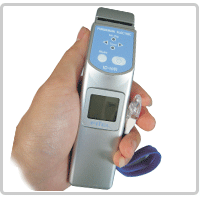Data transfer at lightning rates is now a need in the world of modern
technology, not a luxury. The sophisticated procedures that guarantee the effectiveness
and dependability of fiber optic cables are at the core of this technical
wonder. Two essential elements of these procedures are the Fiber Crimping Machine and the Fiber Curing Oven.
Fiber Curing Oven
Optimizing Sturdiness and Dependability: Because they are fragile materials, fiber
optics must be handled carefully to preserve both their performance and
integrity. The Fiber Curing Oven comes into play here. It is essential to the
manufacturing process because it strengthens and increases the mechanical
strength of the optical fibers by curing them.
Curing Procedure: The
fiber optic cables must be exposed to regulated heat during the curing process,
usually in a Fiber Curing Oven. The cables' polymer matrix experiences
cross-linking reactions as a result of this heat treatment, improving their
mechanical qualities.
Mechanical Strength:
The Fiber Curing Oven greatly
increases the tensile strength of the fibers by curing them, enabling them to
endure the rigors of installation and use without sacrificing performance.
Reliability: Over
extended periods, reliable data transmission is ensured by cured fibers'
decreased vulnerability to environmental elements including moisture and
temperature variations.
Quality Control: The
Fiber Curing Oven is an essential component of quality control, guaranteeing
that every fiber optic cable satisfies strict industry requirements for
dependability and longevity.
Fiber Crimping Machine
Fine Precision in Connectivity: Precision and accuracy are necessary while connecting fiber optic
cables to preserve signal integrity and reduce losses. This is where fiber
optic cable termination and splicing are made simple with the help of the Fiber
Crimping Machine.
Exact Termination: With
the help of the Fiber Crimping Machine, fiber optic connector termination may
be done precisely, guaranteeing ideal alignment and little signal loss during
data transfer.
Beyond termination, the Fiber Crimping Machine's splicing capabilities
enable the smooth connecting of fibers to increase network coverage or fix
damaged areas.
Efficiency: These devices greatly increase production by automating the crimping process, which lowers labor expenses and speeds up fiber optic installations and maintenance.
Uniformity: By guaranteeing uniformity in splices and terminations, the Fiber Crimping Machine reduces variability and guarantees consistent performance across all connections.













